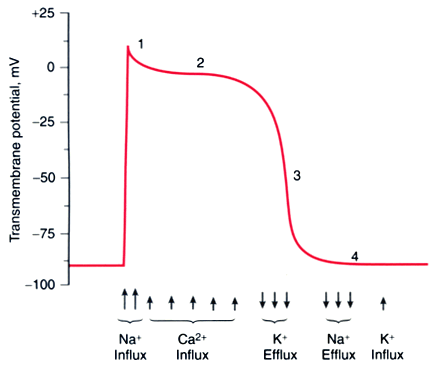Figure 18-11
Phases of cellular action potentials and major associated
currents in ventricular myocytes. The initial phase zero spike and overshoot (1)
are caused by a rapid inward Na current, the plateau phase (2) by a slow Ca current
through L-type Ca channels, and repolarization (phase 3) by outward K currents.
Phase 4, the resting potential (Na efflux, K influx), is maintained by Na-K-ATPase.
The Na-Ca exchanger is mainly responsible for Ca extrusion. In specialized conduction
system tissue, spontaneous depolarization takes place during phase 4 until the voltage
resulting in opening of the Na channel is reached. (From LeWinter MM, Osol
G: Normal physiology of the cardiovascular system. In
Fuster V [ed]: Hurst's The Heart, 10th ed. New York, McGraw-Hill, 2001, pp 63–94.)

